You might not realize that the best drones for mapping in 2025 are more advanced than ever, offering features that were once reserved for high-end commercial models. With precision imaging and centimeter-level positioning, these drones cater to both hobbyists and professionals alike. So, how do you choose the right one for your specific needs? Let’s explore the top picks that are setting new standards in the world of mapping.
Autel Robotics EVO II PRO RTK V3 Drone

When it comes to precise mapping applications, the Autel Robotics EVO II PRO RTK V3 Drone stands out as an exceptional choice for professionals in fields like urban planning and environmental protection. With its Sony 1 6K camera, you’ll capture stunning images at 30fps HDR. Its impressive 38-minute battery life and 15 km transmission range guarantee you can cover large areas efficiently. The drone’s RTK module provides real-time centimeter-level positioning, eliminating the need for ground control points. Plus, it supports automated flight routes for consistent data acquisition, making it a reliable tool for your mapping needs.
Best For: Professionals in urban planning, environmental protection, and mapping applications seeking high precision and efficiency.
Pros:
- Exceptional Imaging: Equipped with a Sony 1 6K camera, capturing high-quality images at 30fps HDR.
- Long Flight Time: Offers an impressive battery life of 38 minutes, allowing for extensive coverage of large areas.
- Real-Time Positioning: Features a high-precision RTK module for centimeter-level accuracy without the need for ground control points.
Cons:
- Cost: High-end features may come at a premium price, potentially limiting accessibility for some users.
- Complexity: Advanced technology may require a learning curve for those unfamiliar with drone operations and RTK systems.
- Limited Weather Resistance: Performance may be affected in adverse weather conditions, limiting operational flexibility.
Potensic ATOM SE GPS Drone with 4K EIS Camera
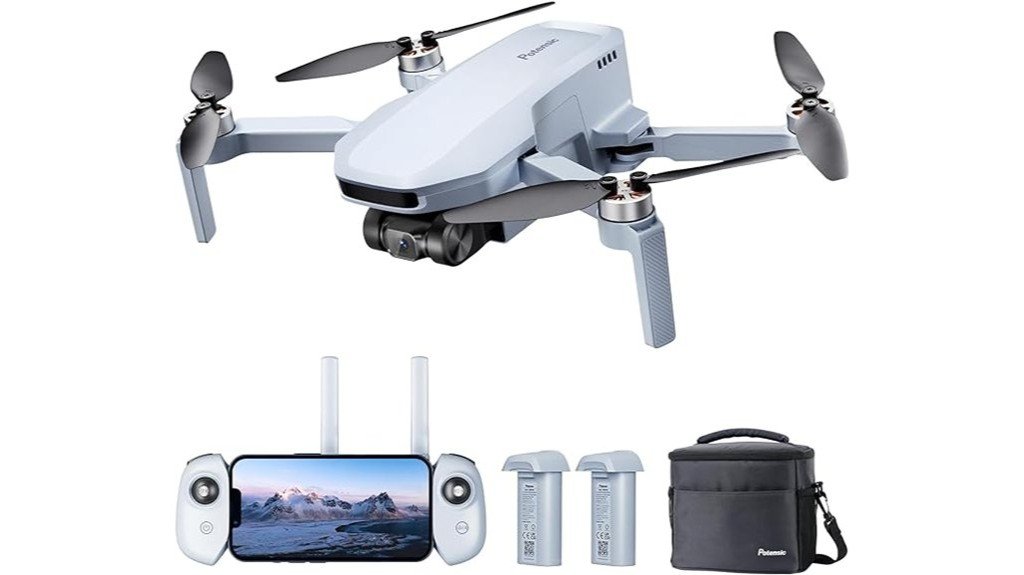
The Potensic ATOM SE GPS Drone with 4K EIS Camera is an excellent choice for mapping enthusiasts and beginners alike. Weighing under 249g, it’s lightweight and foldable, fitting easily in your pocket. With a flight time of 62 minutes across two batteries, you can cover significant ground. Its 4K EIS camera guarantees smooth, high-quality images, while features like Follow Me and Waypoint Flight simplify your mapping tasks. The 16m/s max speed and level-5 wind resistance assure stability. Plus, with a 4KM transmission range, you won’t miss a detail, making it perfect for both casual and professional use.
Best For: The Potensic ATOM SE GPS Drone is best for mapping enthusiasts and beginners looking for a user-friendly, high-quality drone experience.
Pros:
- Lightweight and portable design makes it easy to carry, fitting in a jacket pocket.
- High-quality 4K EIS camera ensures smooth and stable image capture, perfect for photography and videography.
- User-friendly flight modes and autonomous features simplify operation for beginners and enhance functionality for experienced users.
Cons:
- Limited flight range of 4KM may be restrictive for certain professional applications.
- Requires Wi-Fi connectivity for remote control, which may not be available in all locations.
- Battery life could be extended with additional purchases for longer flight sessions.
2K HD FPV Drone with Camera for Adults
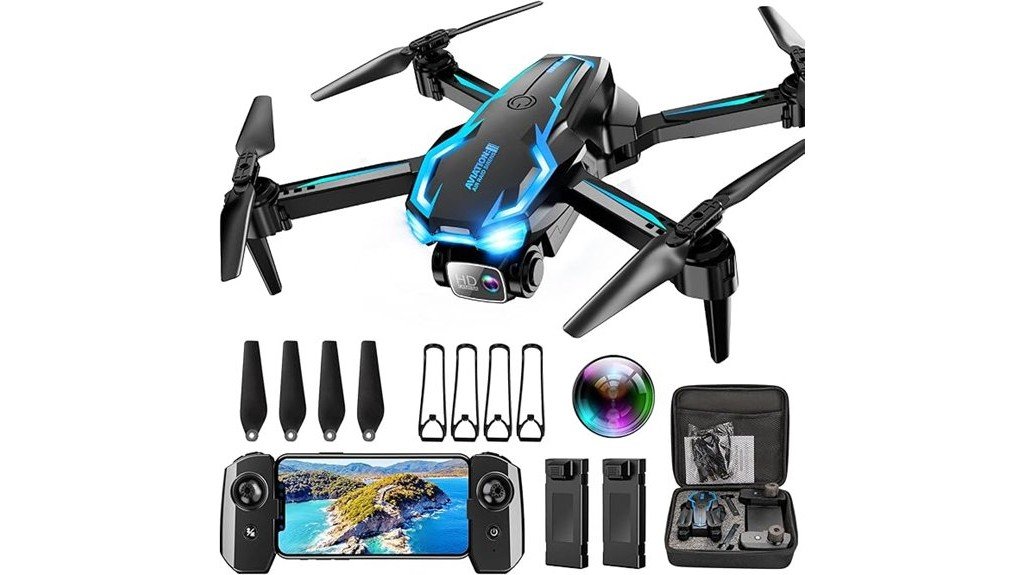
If you’re looking for an accessible yet capable drone for mapping and aerial photography, the 2K HD FPV Drone (X69) by Loiley stands out with its 2K Ultra HD camera and real-time FPV transmission. Weighing under 250g, it’s FAA registration-free and compact enough to fit in your pocket. With three speed modes and intuitive controls like one-key takeoff and altitude hold, it’s perfect for any skill level. You’ll appreciate the 20-minute flight time from its two rechargeable batteries. Plus, safety features such as propeller guards and low-voltage alerts guarantee a worry-free experience while you explore the skies.
Best For: The 2K HD FPV Drone is best for beginners, teens, and adults who are interested in recreational flying and aerial photography without the need for FAA registration.
Pros:
- High-quality 2K Ultra HD camera with adjustable angle for clear visuals.
- User-friendly controls and features like one-key takeoff, making it easy for beginners to operate.
- Portable design that fits in a pocket or backpack, ideal for travel and outdoor adventures.
Cons:
- Slight delay in video feed may not be suitable for professional use.
- Limited flight time of approximately 20 minutes per battery may require carrying extra batteries for extended use.
- Durability concerns in cases of more severe crashes beyond minor impacts.
DJI Mini 4K Camera Drone Combo

For those seeking an easy-to-use drone for aerial mapping, the DJI Mini 4K Camera Drone Combo stands out with its impressive 4K Ultra HD camera and lightweight design. Weighing under 249 g, you won’t need FAA registration for recreational use. Enjoy up to 62 minutes of flight time with two batteries and a max transmission range of 10 km. Its 3-axis gimbal guarantees stable, cinematic shots, even in wind up to 38 kph. With beginner-friendly features like one-tap takeoff and automated flight patterns, you’ll capture stunning aerial footage effortlessly. Plus, the DJI Fly app offers helpful tutorials for quick mastery.
Best For: Hobbyists and beginners looking for an easy-to-use drone with high-quality aerial photography capabilities.
Pros:
- 4K Ultra HD camera provides stunning image quality for both photos and videos.
- Lightweight design (under 249 g) eliminates the need for FAA registration for recreational use.
- User-friendly features like one-tap takeoff and automated flight patterns simplify the flying experience.
Cons:
- Lacks advanced features such as collision avoidance, which may limit flying in complex environments.
- Battery life may average around 20 minutes per flight under typical conditions, requiring multiple batteries for extended use.
- DJI Fly app is not available on Google Play, necessitating a download from the official website for access to tutorials and controls.
GPS Drone with Camera and Remote Control
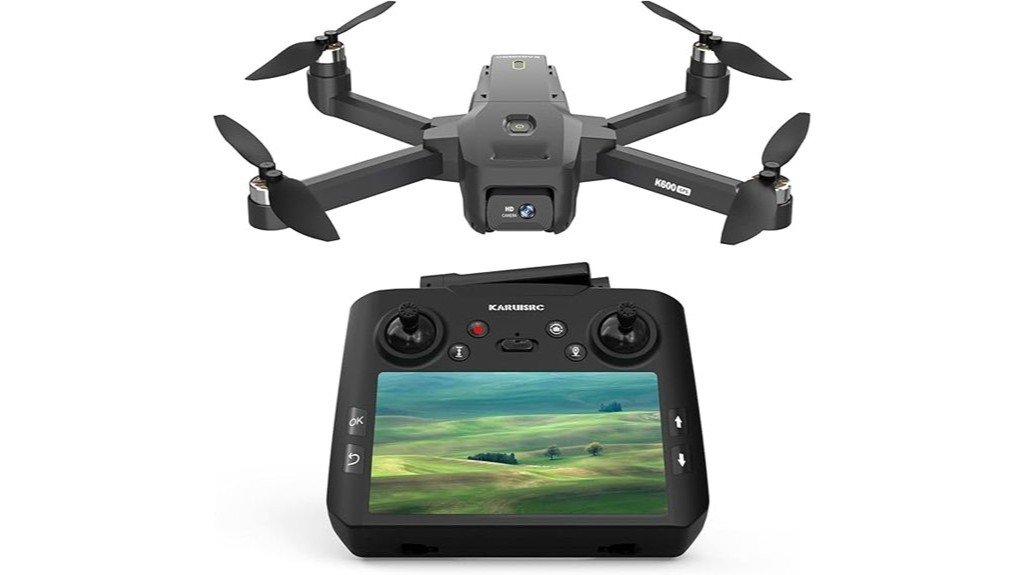
With its advanced HD camera and 4.5 inch LCD screen, the GPS Drone with Camera 4.5 LCD Screen Remote Control is perfect for hobbyists and professionals looking to capture stunning aerial footage. Weighing just 205.8 grams, it’s lightweight and easy to transport in its carrying case. Enjoy real-time video transmission and vibrant imagery with its 2K camera. The precise GPS guarantees stable positioning, while the auto follow feature makes capturing dynamic shots effortless. With a control range of 400 meters, you can explore extensively. Plus, the one-touch operation saves your photos and videos directly to the included 32G SD card.
Best For: Hobbyists and professionals seeking a lightweight, easy-to-use drone for capturing high-quality aerial footage.
Pros:
- High-quality camera with 2K resolution for vibrant and detailed imagery.
- User-friendly design suitable for all skill levels, including beginners.
- Real-time video transmission allows for immediate previewing and capturing of footage.
Cons:
- Limited control range of 400 meters may restrict exploration in larger areas.
- Battery life may be a concern for extended use without additional batteries.
- Wind resistance may not be adequate for very windy conditions, affecting stability.
Drone with Camera for Adults – 2K HD FPV Live Video Quadcopter
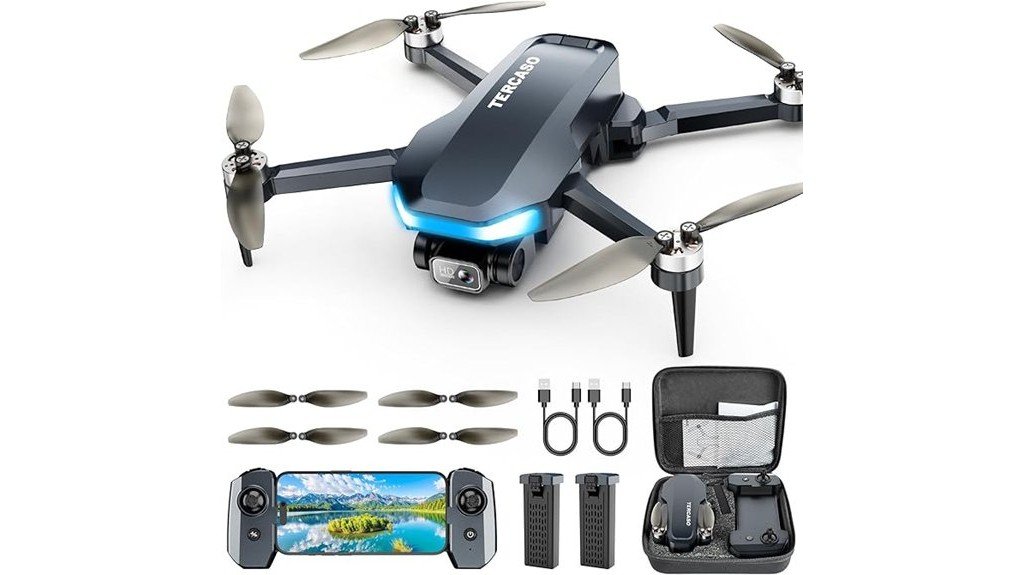
The Drone with Camera for Adults—featuring a 2K HD camera and FPV live video—is an excellent choice for both hobbyists and beginners looking to explore aerial photography and mapping. This foldable, lightweight quadcopter comes equipped with a GPS for auto return, ensuring you’ll never lose it. With brushless motors, it offers a quieter flight and longer lifespan. Capture stunning images with its 110° wide-angle camera, while the altitude hold feature helps maintain stability. Plus, its user-friendly controls make navigation a breeze. Two batteries extend your flight time, and the included carrying case makes it portable and convenient for on-the-go mapping adventures.
Best For: This drone is best for beginners, hobbyists, and kids interested in aerial photography and mapping.
Pros:
- User-friendly controls make it easy for beginners to navigate and operate.
- Lightweight and portable design allows for convenient travel and storage.
- High-quality 2K HD camera captures stunning images and videos with stability.
Cons:
- Limited battery life may require frequent recharging for extended use.
- Range of the FPV transmission might be restricted compared to higher-end models.
- Requires practice to master all flight modes and features effectively.
Drone with Camera for Adults, 2K HD FPV Drones
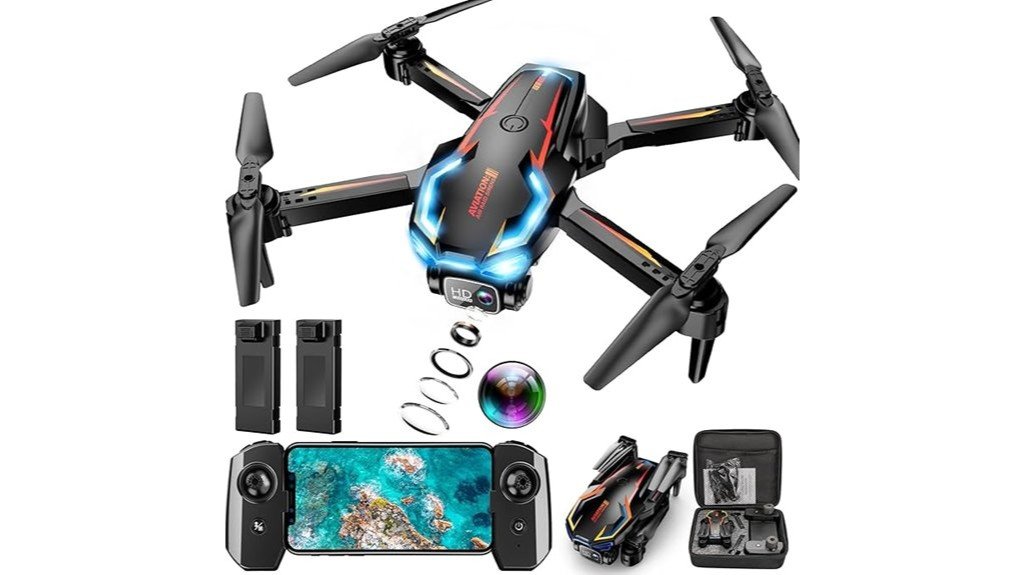
Looking to elevate your mapping projects? The Loiley Drone with Camera is your perfect companion. This 2K HD FPV drone offers impressive photo and video quality with 90° adjustable angles, ensuring you capture every detail. Weighing under 250g, it’s easy to fly without FAA registration, and its two rechargeable batteries provide around 26 minutes of flight time. With user-friendly features like one-key takeoff and gravity sensing, steering your drone is a breeze. Plus, enjoy real-time panoramic views on your smartphone and share your stunning captures effortlessly on social media. Elevate your aerial mapping with the Loiley today!
Best For: The Loiley Drone with Camera is best for hobbyists and professionals looking for an easy-to-use, high-quality drone for aerial photography and mapping projects.
Pros:
- High-resolution 2K Ultra HD camera with 90° adjustable angles for detailed captures.
- User-friendly features like one-key takeoff, gravity sensing, and upgraded flight stability.
- Lightweight design under 250g, eliminating the need for FAA registration.
Cons:
- Limited flight time of approximately 26 minutes per charge.
- May require practice for beginners to master control and maneuvering.
- Battery life could be insufficient for extended mapping sessions without additional batteries.
Slamtec RPLIDAR M2M3 Mapping Lidar Sensor Scanner
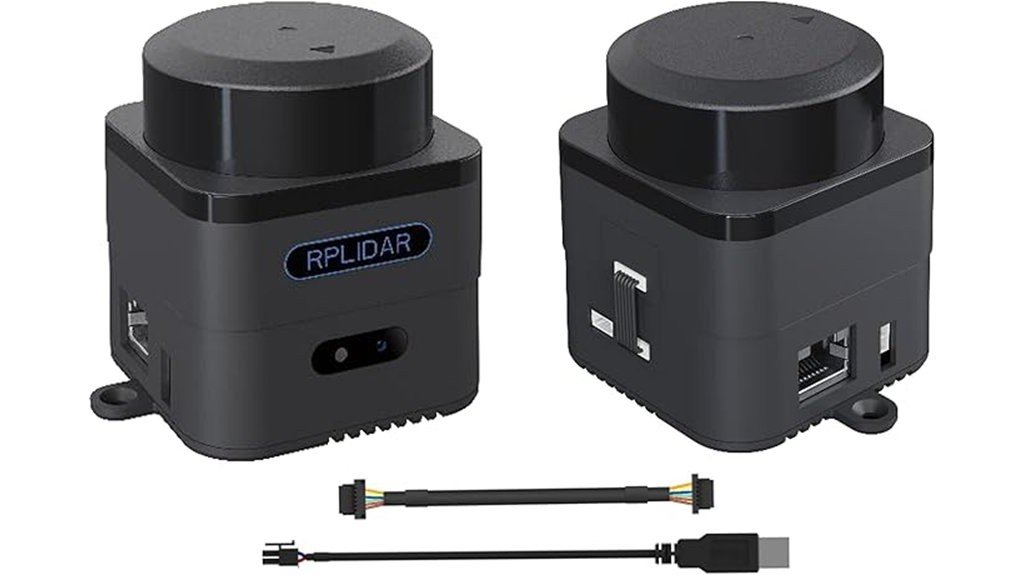
For professionals in robotics and environmental mapping, the Slamtec RPLIDAR M2M3 Mapping Lidar Sensor Scanner stands out as an essential tool. Weighing only 6.3 ounces and featuring a compact design, it offers a 360° scanning range from 0.1m to 40m. Its built-in SLAM technology enables real-time mapping and localization, perfect for various applications. With stable data transmission and compatibility with ROS, you can expect fast, accurate results. The complete SDK and supplied RoboStudio software further enhance your development experience. If you’re looking to optimize your mapping projects, this Lidar sensor is a solid choice for precision and performance.
Best For: Professionals in robotics and environmental mapping who require a compact and high-performance Lidar sensor for precise mapping and localization.
Pros:
- Compact and lightweight design makes it easy to integrate into various robotic systems.
- Built-in SLAM technology enables real-time mapping and localization for enhanced navigation and environmental analysis.
- Full compatibility with ROS and a complete SDK allows for fast data analysis and expanded development opportunities.
Cons:
- Limited range of 40m may not be sufficient for some large-scale mapping projects.
- Weight may still be a concern for ultra-portable applications or smaller robots.
- Requires software setup and familiarity with SDK for optimal use, which might be challenging for beginners.
GPS Drone with Camera for Beginners
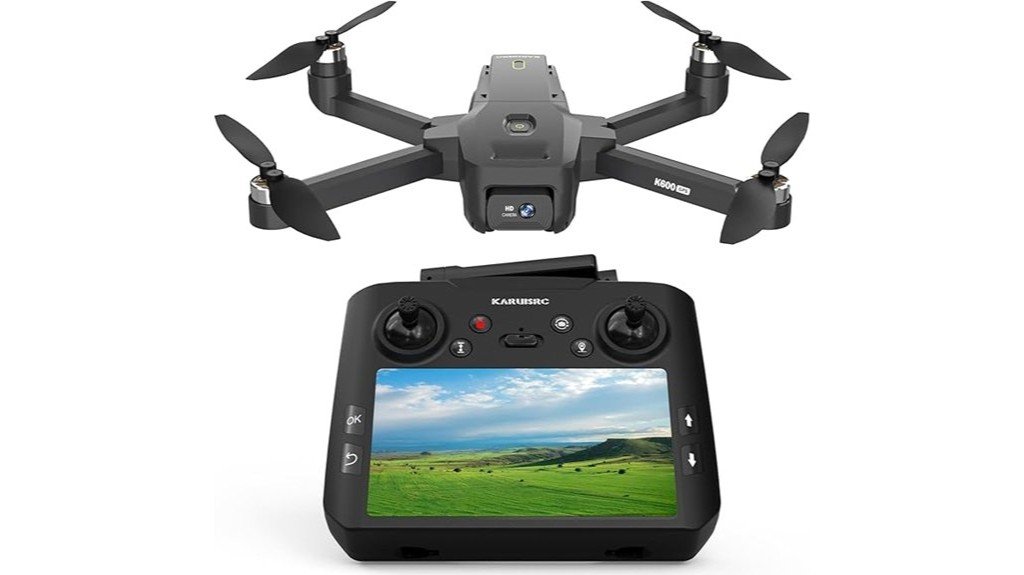
Ideal for adults stepping into the world of aerial photography, the K600GPS GPS Drone with Camera combines user-friendly features with impressive technology. Weighing just 2.27 pounds, it’s easy to handle and transport. The dual cameras capture ultra HD video at 1080p and stunning photos mid-flight. Plus, the wide-angle stabilized lens guarantees smooth footage. With a 4.5 HD LCD remote control screen, you can enjoy live video streaming. Safety features like auto return and the Follow Me mode enhance your experience. The included 32GB SD card and durable carrying case make this drone perfect for beginners enthusiastic to explore aerial mapping.
Best For: Adults looking to enter the world of aerial photography with an easy-to-use drone.
Pros:
- User-friendly features make it accessible for beginners.
- High-quality dual cameras provide ultra HD video and stunning photos.
- Safety features like auto return and Follow Me mode ensure a worry-free flying experience.
Cons:
- Limited battery life may require frequent recharging during extended use.
- Nonstandard battery could be harder to replace if lost or damaged.
- Weight may not appeal to those seeking ultra-lightweight options for travel.
Bwine B112 Remote ID Module for Drones
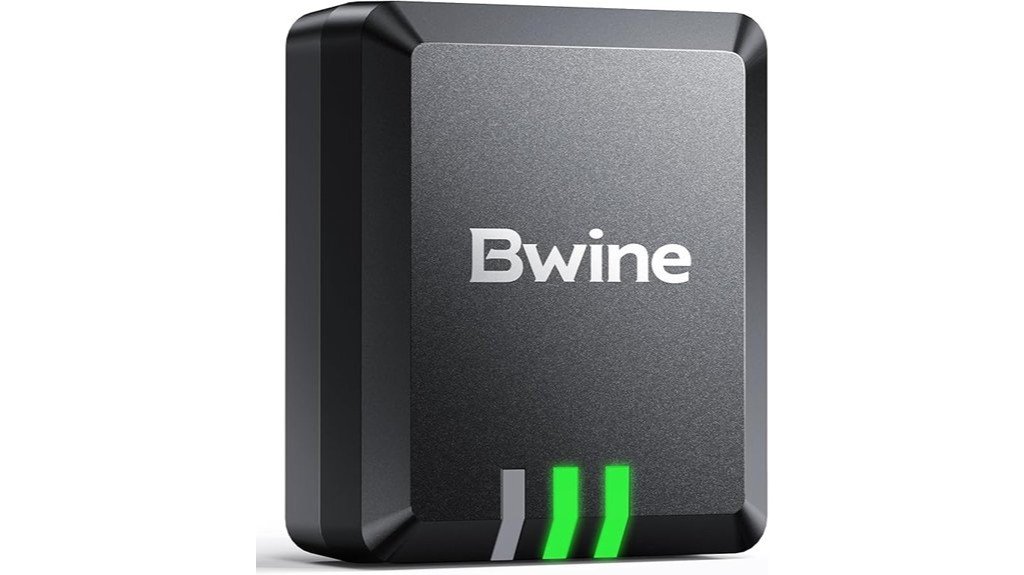
The Bwine B112 Remote ID Module is a must-have for drone enthusiasts operating models over 250g, such as the Mavic 3 or Phantom 4. This FAA-compliant module offers real-time GPS tracking with impressive accuracy—less than a 3m error margin—making it perfect for mapping tasks. Weighing just 13.5g and measuring 1.3×1.1×0.5 inches, it’s 30% smaller than standard modules, ensuring minimal impact on your drone’s performance. With a 5-hour battery life and fast charging via Type-C, installation is straightforward, thanks to included tools. Join over 965 satisfied customers who’ve rated it 4.3 out of 5 stars.
Best For: Drone enthusiasts operating models over 250g, such as the Mavic 3 or Phantom 4, who need a compact and FAA-compliant Remote ID solution.
Pros:
- Compact design at 1.3×1.1×0.5 inches, 30% smaller than standard modules, ensuring minimal weight impact.
- Provides real-time GPS tracking with an accuracy of less than 3m, ideal for mapping tasks.
- Fast charging capability with a 5-hour battery life, enhancing usability during flights.
Cons:
- Requires installation, which may be challenging for some users without experience.
- Limited effective range of 500-800m might not meet the needs of all drone operators.
- Only compatible with drones over 250g, excluding lighter models from use.
Factors to Consider When Choosing a Drone for Mapping
When choosing a drone for mapping, you need to take into account several key factors. Camera resolution is essential for capturing detailed images, while flight time affects how much area you can cover in one go. You’ll also want to reflect on mapping accuracy, autonomy, and the payload capacity based on your specific needs.
Camera Resolution Importance
Camera resolution plays a pivotal role in the effectiveness of aerial mapping. When choosing a drone, you’ll want one equipped with a high-resolution camera, ideally 4K or 2K HD. This guarantees that the images captured are clear and detailed, allowing you to identify smaller features on the ground. A minimum resolution of 12 MP is recommended to maintain quality and detail while enabling effective scalability and cropping. The resolution directly impacts the quality of orthomosaics and 3D models generated from your images. Higher resolution also means denser point clouds, which improves the overall accuracy of your mapping output. Investing in a drone with superior camera specs can greatly enhance your mapping projects.
Flight Time Considerations
While planning your mapping project, flight time is a critical factor that can greatly impact your efficiency. Longer flight durations allow you to cover larger areas in a single mission, reducing the need for multiple flights. Aim for drones with a flight time of at least 30 minutes, as this provides ample time for detailed data collection. Consider having extra batteries on hand to extend operational time, enabling continuous mapping sessions without significant downtime. Keep in mind that wind resistance can affect flight stability and battery consumption, so choose drones designed for higher wind conditions. Finally, remember that battery life is influenced by payload weight, flight altitude, and environmental conditions, all of which should factor into your planning.
Mapping Accuracy Requirements
Achieving high mapping accuracy is vital for the success of your drone project. To guarantee precision, look for drones equipped with RTK (Real-Time Kinematic) modules, which can deliver centimeter-level positioning accuracy—typically around 1 cm horizontally and 1.5 cm vertically. These modules eliminate the need for ground control points, enhancing your mapping efficiency. It’s also important to choose drones that can autonomously execute flight routes, guaranteeing consistent data collection across missions. Consider environmental factors like wind resistance, as drones designed to handle higher wind speeds will provide more reliable data. Finally, verify the drone can maintain camera gimbal consistency and record previous shooting positions for repeatability in capturing the same area accurately over time.
Autonomy and Automation
When selecting a drone for mapping, it’s crucial to contemplate the autonomy and automation features that can enhance your project’s efficiency. Drones with autonomous flight capabilities allow you to create complex flight paths, like waypoints and polygons, which streamline your mapping missions. Advanced automation lets you record previous shooting positions, guaranteeing consistent data collection across multiple flights. Utilizing drones with real-time centimeter-level positioning, such as those equipped with RTK modules, enables high-accuracy automated missions without needing ground control points. Additionally, the ability to replicate gimbal and camera settings during these missions ensures uniform image quality and data integrity. Embracing automation greatly reduces human error and labor costs, speeding up data acquisition and analysis in fields like urban planning and environmental monitoring.
Payload Capacity Needs
Choosing the right drone for mapping necessitates careful consideration of its payload capacity, as this directly influences the type of camera and sensors you can use. A higher payload capacity allows for advanced sensors or cameras that greatly enhance mapping accuracy and data quality. It’s essential to verify the drone’s design supports stable flight with heavier payloads; instability can compromise data integrity during missions. Additionally, look for drones offering real-time data transmission capabilities, as payload weight can impact efficiency. Finally, be mindful of regulatory restrictions regarding payload limits. Understanding these weight limits helps you stay compliant with local laws while maximizing your drone’s mapping potential.
Environmental Adaptability Factors
Environmental adaptability is essential for mapping drones, as they need to perform reliably across various weather conditions. Look for drones that can withstand wind resistance levels of Level 5 or higher for stable flight. Consider the drone’s ability to operate in different temperatures and humidity levels, which is important for maintaining battery efficiency and sensor accuracy during your mapping missions. Advanced flight control systems are a must for autonomous navigation over varying terrains and obstacles, ensuring thorough data collection. Also, drones with RTK (Real-Time Kinematic) technology provide centimeter-level positioning accuracy, critical for detailed mapping. Finally, choose drones that support a range of camera types and resolutions to capture high-quality images and videos, essential for creating accurate maps and models.

